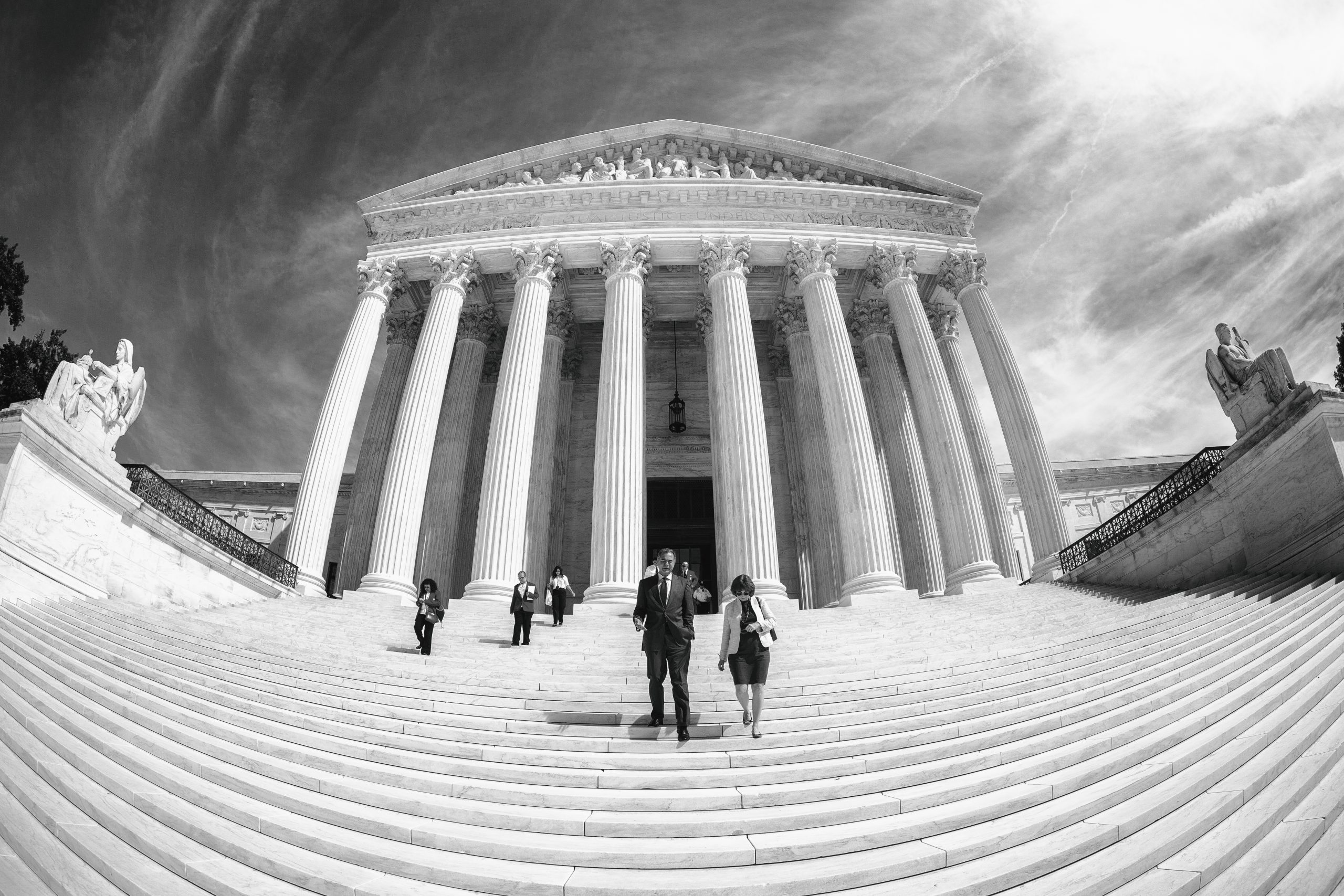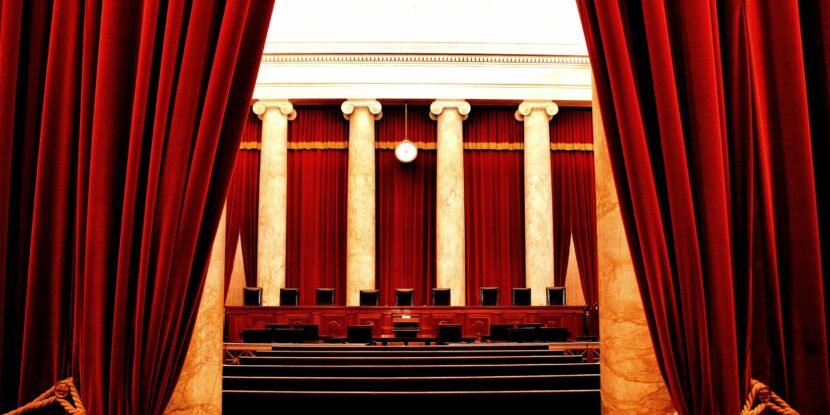The Supreme Court issued several surprising and appalling decisions this week. Justice Neil Gorsuch found protection for transgender employees in the 1964 Civil Rights Act, despite the writers of that law never once mentioning it. Meanwhile, Chief Justice John Roberts wrote that President Trump could not counteract President Obama’s executive order protecting so-called “dreamers” from deportation with an executive order of his own.
While disappointing for conservatives, these decisions continue a long trend of the Supreme Court taking a more prominent role in creating the laws that shape our society.
From Roe v Wade which legalized abortion in all 50 states to Obergefell v. Hodges which forced every state to recognize gay marriage, decisions made by just five black-robed people can have more impact on our lives than those made by Congressmen, Senators, or Presidents.
How did the Supreme Court become so powerful? Is this what the founders of our country intended?
The Supreme Court was created by Article III of the Constitution as the preeminent federal court, but the actual structure was left to Congress. The Judiciary Act of 1789 established a six-member panel of justices, and President Washington appointed John Jay as the first Chief Justice.
The first major test of the Supreme Court came in the early 1800s, when Chief Justice John Marshall took it upon himself to declare a portion of a congressional law unconstitutional. Marbury v. Madison established the precedent of judicial review, which was not part of the original conception of the Court.
In 1805, the House of Representatives impeached Justice Samuel Chase, alleging he was letting his partisan leanings affect his decisions. The Senate acquitted him, however, with many Senators worried about the precedent of Congress exercising ideological control over the judiciary.

By the late 1800s, Congress had increased the number of justices from six to nine. President Franklin Roosevelt asked Congress to increase that number even further in 1936 after the Supreme Court struck down part of his New Deal. More justices meant FDR himself would fill the new vacancies, and he could make sure they supported his agenda. While this “court-packing scheme” never made it out of Congress, the Court was suddenly more accommodating toward the New Deal, upholding several provisions in the late 1930s.
The Supreme Court has only become more of a partisan battleground in the past century.
In 1973, Roe v. Wade overturned numerous state laws prohibiting or restricting abortion. Justice Harry Blackmun’s opinion went so far as to instruct states on exactly which trimester of pregnancy they were permitted to impose restrictions.
Blackmun, admitting the Constitution does not specifically refer to abortion, wrote that it was instead found in the “penumbras” that “emanated” from the Bill of Rights. In the half century since Roe, the Supreme Court has continued to find new rights in the “penumbras” of the Constitution and federal laws, with Justice Gorsuch’s discovery of transgenderism in the Civil Rights Act only the latest example.
Obergefell is a great example of judicial activism.
With many Americans still opposed to gay marriage, activists found it simpler to enact it nationwide using the Supreme Court rather than working through fifty individual state legislatures.
When President Donald Trump appointed Brett Kavanaugh to succeed Justice Anthony Kennedy, many Democrats worried that this ability to legislate from the Supreme Court was slipping away. In addition to viciously attacking Kavanaugh during his confirmation, many Democratic politicians looked to FDR for inspiration.
“Any Democratic presidential candidate who is serious about implementing a progressive agenda has to seriously consider appointing new justices to unpack the courts,” said Ezra Levin, co-founder of the progressive judicial activism group Indivisible.
Presumptive Democratic presidential nominee Joe Biden has thus far been unwilling to consider changing the structure of the Supreme Court.
“I’m not prepared to go on and try to pack the court, because we’ll live to rue that day,” he told an Iowa news outlet last year.
But Biden had a hand in turning the Court into an explicit political battleground in the first place.

When President Reagan nominated Robert Bork to the Supreme Court in 1987, then-Senator Biden helped lead the fight against Bork in his confirmation hearings. Biden specifically attacked Bork’s belief in the strict meaning of the Constitution, arguing that the Constitution grants rights that go beyond what is detailed in the text itself, including the right to abortion.
Ever since Senators Biden and Ted Kennedy stopped Bork’s nomination, the Democrats have fought every Republican-appointed justice tooth and nail. They turned Clarence Thomas’s confirmation hearing into a “high-tech lynching,” and most recently they turned Brett Kavanaugh’s confirmation battle into a circus.
While Republicans generally allow Democratic presidents leeway in nominating justices that share their progressive ideology, the Democrats have not shown such deference to Republican presidents.
While justices appointed by Democratic presidents remain committed to progressive ideology for their entire tenure, Republican-nominated justices often shift to the left.
Anthony Kennedy, who cast the deciding vote in Obergefell v. Hodges that legalized gay marriages throughout America, was appointed by President Reagan.
David Souter, nominated by President George H.W. Bush, made himself at home in the liberal wing of the court.
John Roberts, who used creative wordplay to uphold Obamacare now DACA, was appointed by President George W. Bush.
Even President Trump’s first nominee, Neil Gorsuch, has now found emanations of transgenderism in the 1964 Civil Rights Act.
The GOP strategy of objectivity has clearly failed.

The first sign of resistance by Republicans was in 2016, when President Obama nominated the moderately progressive Judge Merrick Garland to fill the seat left by the late Justice Antonin Scalia.
Senate Majority Leader Mitch McConnell refused to schedule the confirmation hearing, however, deciding to leave the job of filling the seat to the next president. The gamble paid off: had Hillary Clinton won the election, she surely would have nominated a progressive extremist.
If conservatives are to regain ground in the culture war, they will need more aggressive tactics. Democrats turned the Supreme Court into an ideological weapon decades ago.
If President Trump wins reelection this year, perhaps Republicans should consider packing the Supreme Court themselves before the Democrats have the chance.
Perhaps Congress should consider impeaching obviously biased judges, as they did with Justice Chase two centuries ago. One thing is for sure: Republicans must stop treating potential justices as objective arbiters of the law.
The last half-century has proven that they are ideological warriors, no different from any other politician.


